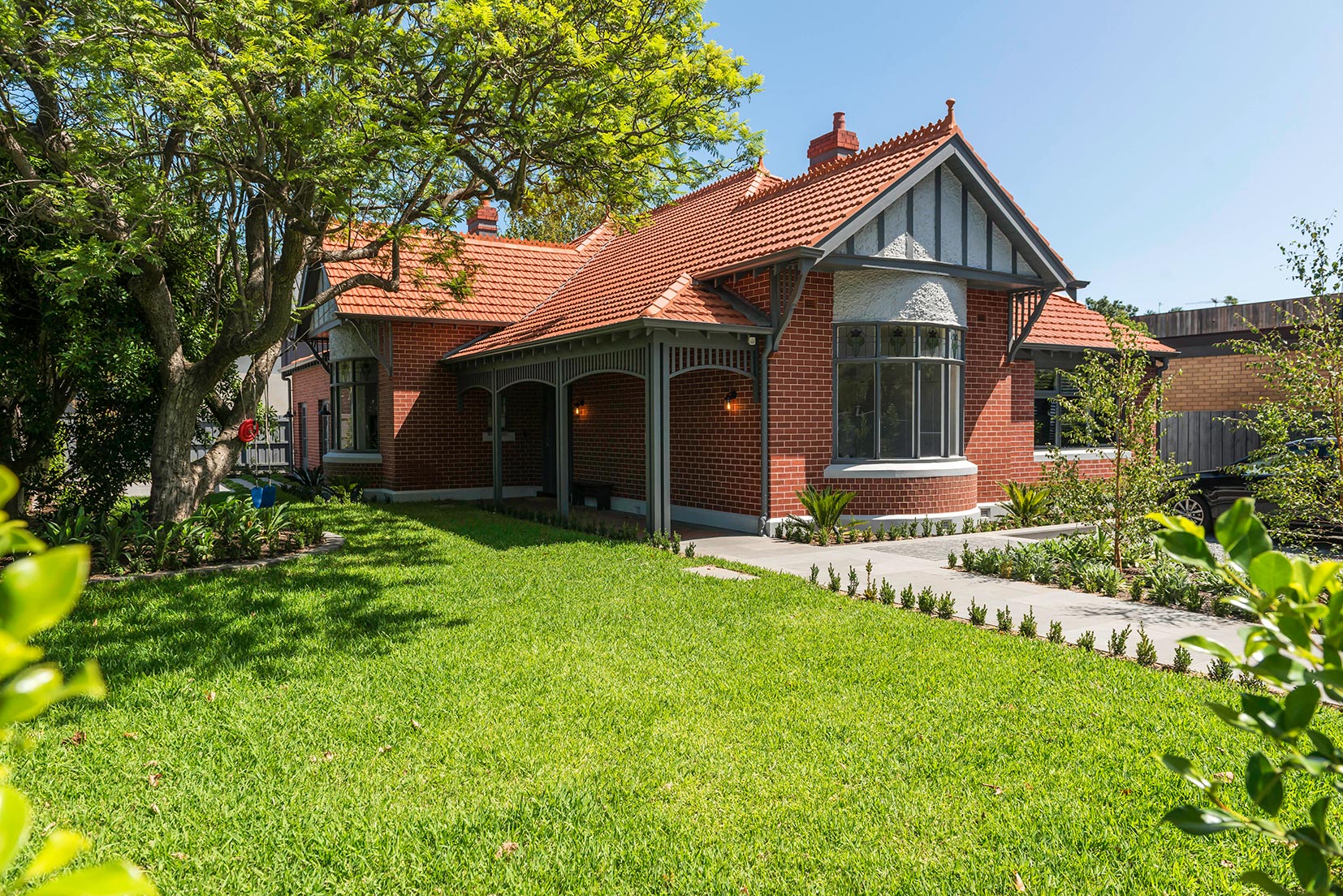
Façade restoration is an art form with a simple aim – to breathe new life into a home while staying true to its original design intent and craftsmanship. When done well, a heritage restoration can bring your home into the modern day and provide a unique opportunity to be part of history.
But a heritage restoration shouldn’t be taken lightly – to truly revive your home and pay homage to the bygone era in which it was built, you will need to conduct plenty of research and engage specialist consultants with expert knowledge.
If you’re considering a façade restoration, continue reading to learn more about the art of preserving heritage architecture.
Restoring a heritage façade to its former glory can bring out the inherent charm and character of your home, allowing it to shine brightly. Not only can a restoration enhance your home’s aesthetic appeal, it will also ensure its longevity (and resale value) for many years to come, making it a worthwhile financial investment. And, with its unique architectural features and historical significance, a well-restored heritage home can become a cherished part of your local neighbourhood.
While restoring a heritage façade may involve a significant financial commitment, the rewards – in both personal satisfaction and potential financial gain – make it a worthwhile undertaking for many homeowners.
As with any challenging construction project, the first step in a heritage restoration is to seek professional advice. Heritage homes come with their own set of unique challenges so it’s essential to engage a builder who has experience in similar projects and who understands exactly what is involved. By engaging an inexperienced builder, you run the risk of a poorly executed restoration or extreme budget blowout.
Once you’ve found the right construction team, it’s time to establish what you want to achieve. Find inspiration in magazines, on apps like Pinterest and Instagram or simply by driving around your local area. To create a restoration that truly pays homage to your home’s original style, we recommend browsing historical records and researching the architectural style of the time – this will help you achieve a realistic recreation of the original home.
Be aware, many heritage homes are protected by heritage overlays or listings, which may restrict what you’re allowed to do. You can check whether restrictions apply to your home on the Victorian Heritage Register website. While the regulations associated with heritage overlays and listings can be overwhelming, an experienced builder will be able to guide you through the process with ease.
It’s the details that make a heritage façade charming and unique. Before you begin, make a list of all the heritage details you’d like to restore, replace or reinstate on your façade – these might be ornamental elements like cast-iron lacework, stained glass windows and decorative bargeboards or structural updates to features like red brickwork or terracotta roof tiles.
Determining what features you will focus on is best done early in the construction process, as heritage materials may take time to source and many hours to physically restore. This is another reason it pays to engage an experienced builder, as they’re more likely to have existing connections with specialist suppliers and expert trades. Lastly, remember to be patient – restoring the little details can take time, but it will pay off when your restoration is complete history.

This charming period home may look pretty as a picture now, but that wasn’t always the case… In 2020, SECON Constructions was approached to restore this dilapidated home to its former glory, undertaking a major restoration that would preserve the authenticity of its character.
Our team were required to strip all the walls back to raw brickwork and replaster them. We replaced all ceilings, and the subfloor was rebuilt and excavated. Externally, we added new roofing with fresh new terracotta tiles and completed a refresh of the iconic red brickwork. The roof also had to be reframed. All external timber had been damaged by severe wet rot, so we rebuilt and replaced all fretwork, rafter tails and eaves. Our team also rebuilt the front porch as it had dipped and flooded.
We are proud to have successfully resurrected this home, restoring it to its former glory and preserving its unique character for decades to come. If you’re looking for a specialist builder to carefully restore a heritage home of your own, get in touch with the expert team at SECON Constructions today.